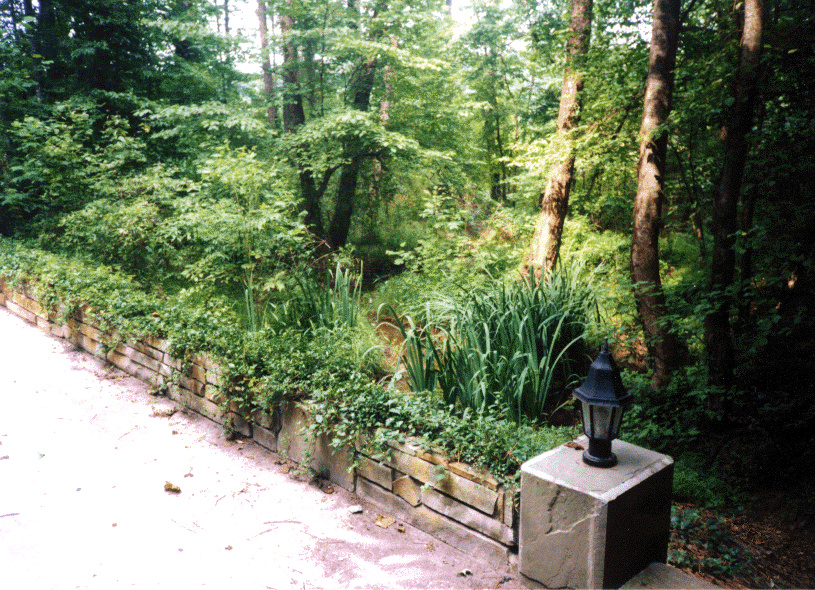

Until the 1930s, this land was used for cotton farming. After that, it was allowed to lay fallow and a southern pine forest sprung up. Some of the pines are four feet in diameter and 100 feet tall. In the woods are the remnants of the farmer's terrace walls made of natural stones plowed from the fields formed on the gentle slopes surrounding a spring-fed stream having a reliable 13 gallon per minute flow even during drought conditions.
The pine forest is beginning to give way to a secondary forest of hardwoods and slow growing red cedars. Around the stream and along the boundaries of the terraces, large hardwoods thrive including some oaks, but mostly tulip poplar and swamp maple trees. Understory dogwoods are prevalent, some having reached diameters of ten to twelve inches over their fifty years of life. (Unfortunately, most of the dogwoods near the cool, damp environment around the stream are in jeopardy from discula anthracnos, a disease specific to native dog wood trees that has migrated from the northern states. Those trees in full sunlight are protected).
Smaller shrubs like mountain loral can be found. Jack-in-the-pulpit plants and May Apples have been imported from Virginia and do well near the stream. Vinca Minor has become prolific as a ground cover in some areas, as has the naturally-occurring Ground Cedar.
The surrounding area has been developed to the point that many of the larger mammals have been run off, but during the building of the house, a bob cat was observed on several occasions (eventually dieing one winter and his bones being discovered the next spring). Occasional deer pass through the area, and a pair of silver fox have been observed. The racoons and possum are perenial inhabitants. It took about two years for the gray squirrels to move back into the area once the house was built, but some residents such as pheobes have nested annually under the front porch eves from the time the house was completed. Barred owls ("eight-hooters") have nexted in the area, and Red-shouldered Hawks have hunted rodents in the woods during the summers.
At night, Whipoorwills move from tree to tree in the woods around the house making their beautiful call, occasionally swooping across the open back yard when the flood lights are on (probably catching insects). Bats also navigate this one acre clearing amid the trees. If you are fortunate, you might get a glimpse of the flying squirrels that live in hollow trees. They can be seen peering out of their holes and scurring around the trunk, only to leap into the air and glide to another tree. They are largely nocturnal however and are rarely seen by day.
A 700 foot paved road winds through the woods from the street to the house. Along the way it crosses a stream. The stream is spring-fed and supplies a three acre lake that has catfish, brim, bass, and crapie. An assortment of other wild life including great blue herons, king fishers, softback turtles, frogs, and microfauna populate this lake.
This is the corner of the bridge that crosses the stream feeding the lake. I did all of the rock work to build the planters along the sides of the bridge. Coach lights are timed to illuminate the bridge during the evenings.

Click here to see a winter scene where snow blankets the area (unusual for Atlanta).
Return to Michelson Bio.

Robert Michelson Principal Research Engineer, Emeritus Georgia Tech Research Institute 7220 Richardson Road Smyrna, Georgia 30080 U.S.A.